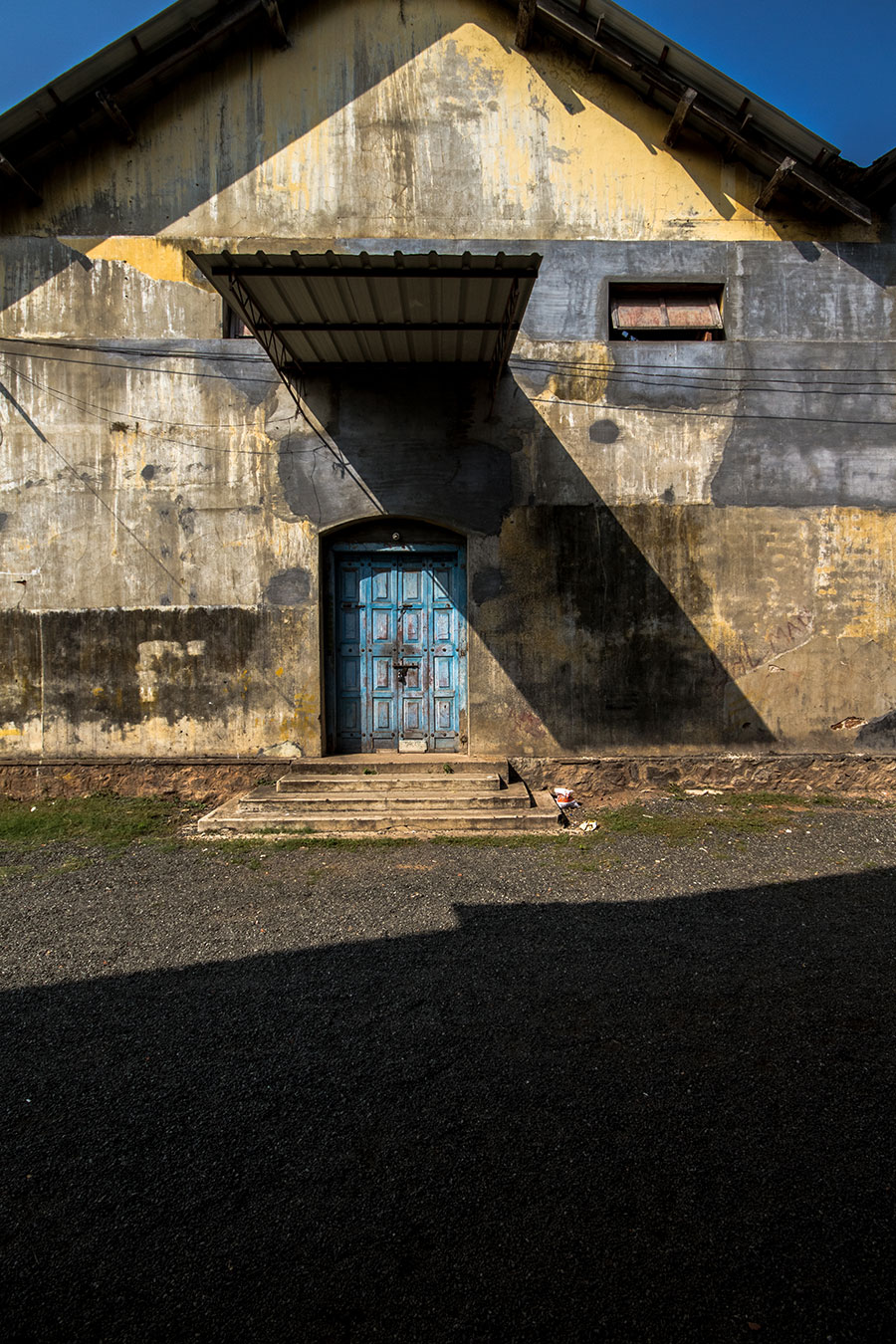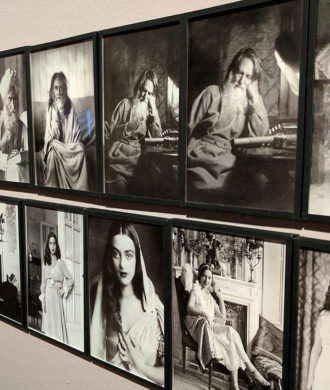URU Art Harbour
A Riveting space full of artful possibilities, this center of arts is a gamechanger. Another pioneering initiative by Riyas Komu and his able team that will breach new ground for art in India.
I cross the URU art harbour the evening before, watching two boys trying to climb over its gates. The moving car gave me a glimpse of the unusual name, URU (it means both one and a boat in Malayalam) art harbour and a hint of an old facade. A facade which reminded me of my mother’s schoolyard, which in turn is similar to many others that dot the landscape of literacy’s poster-child – Kerala. I would later learn that URU is an erstwhile warehouse that is now a center for art. So, the next day I walked through URU’s gates, amidst bleating goats, under the bright December sun. URU art harbour is glorious. A gated community of mammoth, ancient Keralan buildings that don’t intimidate but fade away into its vistas, its gently lapping inland waves and its whispering trees shedding sun-scorched leaves. As you walk around, you find a soft blanket of earth embracing aged, rubbled patches of grass with trees conspiring nearby, creating ruminating nooks. Meditative, contemplative and deviant, URU art harbour, as an art space, has an honest austerity to it. The world spins around, but this place has no pivot, it is still in-waiting, to be what the creator wants it to be. A preserved integrity that says, “I am”. It makes you sit up, wide-eyed, hopeful for the seed called imagination. URU art harbour can become an essential seat of curiosity, this can be a haven for art’s permeability to wonder. For wonder is so essential in these conspiring times with the darkening role of statecraft and far leaning ideologists drafting new rules of humanity. Wonderous illumination can be the only true resistance.
Mattancherry
Mattancherry is the epicenter of the curator’s eye.With this exhibition, Riyas Komu unleashes a world within worlds. Complete with its own complexities, systems, ethics, and etiquettes. It perhaps has its own moon or two. Astonishing in scale, the exhibit takes over its muse. Each, a reflection of the other. It gave me everything I devour in art: excitement, emotion, encounters with the familiar and the new, conversations with bite, evocative human experiences and an unprecedented wholeness that makes you stay or want to come back. It permeates your senses. You can taste the salt in the lines that drew this vision.
click the images for credit details
A brief overview:
Pandd pandd lokam
Mattancherry duram
(long long ago
in the land of Mattancherry)
Anitha Thampi’s verse paints the outer walls, a confluence of lyrical storytelling. Haruki Murakami once wrote about the sound of silence. One feels its strength here, seared on the walls, the lyrics singe the space, belting out tales of its people. Much like an old Malayalam love song. She powerfully colonizes its subject.
Anwar Ali wrote lyrics inspired by Mehboob, the singer who was the soul of music in Kochi. His legend lives and grows, long after he has passed away through his storied past, his songs, his memories and the few men left from the era when Mehboob walked this land. To listen to the rhythm and tone of these simple, folksy songs is to understand the heartbeat of a generation gone by, and tap into its culture.
Kochangadi, Kapalandimukku, Pullupalam, Killiyamapadam – these are some of the areas in and around Mattancherry. The artist Jalaja, has painted larger-than-life-sized portraits of people from the many communities that form the cultural fabric of this shore. The quaint whimsy of their roots (Kapalandimukku translates to The Peanut Nook) and the mortality that sparkles through the eyes of her portraitures belie their stories, each more striking than the next. They point not just at the space but also at the intrinsic diversity that simmers in the union of this mass of humanity.
Black and white photographs by K R Sunil offer a slice of Mattancherry that is not on the tourist trail. A Christian lady – eyebrows burrowed under the strain of the lens, lips pursed strictly, she holds your gaze defiantly. Her glasses are cracked, Jesus blesses her humble home. An elder Muslim woman looks outward. Her room is cramped, a man lies on the bed, a smile plays on his lips, an orphaned plug hangs in the backdrop of worn plywood walls. It’s wistful. Image after image leads you down the rabbit hole. Shrinking figures melting into their surroundings, their stories hold an ache, but they show no fear.
Like a modern God of the pop ages, Latheesh Lakshman’s work sits ably printed on Aurelian metal. The confident posture of the all-knowing. It is glitzy and shiny, attracting the bees with ease. You go closer and you become a part of its reflection along with the art all around and in essence, you become a part of his art. The art that is an exploration of Mattancherry. The artist holds a mirror to the curatorial questions, looks at you to define the answers as you look through his art’s glossy, tinted surface. There is an understated seriousness here and his art does offer a well-orchestrated visual breather within the flow of the exhibition.
Urban Design Collective brings a visceral, cartographic, infographic, journey of the land. It offers a deep silhouette of its developments, its possibilities, opportunities, realities, roadblocks, and in turn, its politics. Resilience transverses its veins to give you a land that is both liberated and deteriorated.
Featuring 13 artists, each work beguiles us closer to unraveling Mattancherry. From a curatorial standpoint the exhibition’s sweeping scale, choreography, its non-aestheticization of the land all add gravitas to the stories it wants to unfold. Lingering, exploring, but never static, its evolution still in-play. Like the water that ebbs and flows through the land, these art stories make islands within us.
It is URU triumph for art!


















